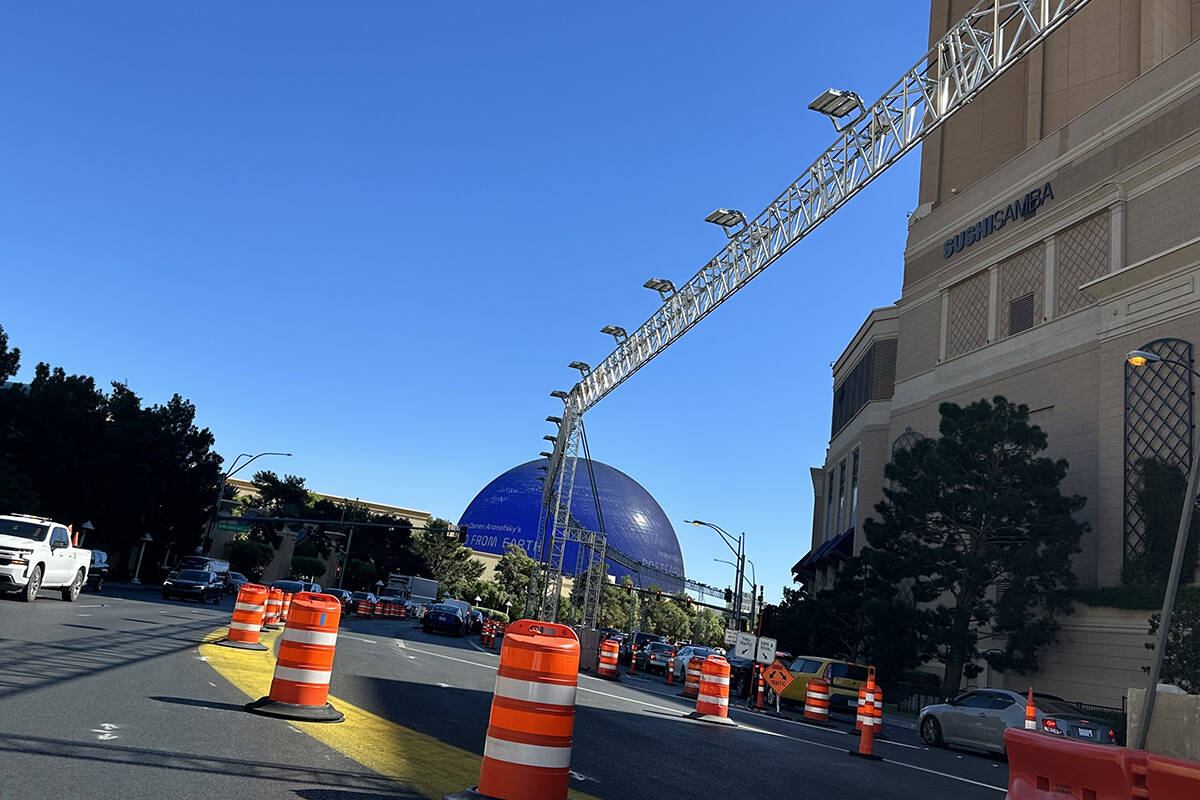Hot track, cold track: F1 Las Vegas Grand Prix traffic flow plan revealed

Race organizers provided an updated look at what traffic conditions will be like before and during the inaugural Formula Las Vegas Grand Prix week.
The plan, presented Tuesday to the Clark County Commission, features different levels of road and lane closures tied to what activities are planned to occur during the week. There’s cold track, warm track and hot track traffic configurations planned.
As crews finish installing track barriers, lighting and temporary bridges the 3.8-mile track consisting of portions of Las Vegas Boulevard, Koval Lane and Harmon and Sands avenues is considered cold. That means the track will be just about race ready, but no racing activities will be occurring.
Koval Lane between Harmon Avenue and Rochelle Avenue will be closed to traffic from Nov. 11 to Nov. 25 to allow for vendors to load in before and stage during the race and to load out after after the event concludes. The closure will also allow for a planned broadcast booth to be constructed near the intersection of Koval and Harmon for the race.
“Koval Lane north of Rochelle will be one lane in each direction, which will provide access to the businesses on the east side of Koval Lanes,” Denis Cederburg, director of public works with Clark County said.
Cold track
During cold track Koval will feature two lanes in each direction north of Flamingo, Cederburg added.
Sands will feature two through lanes in each direction, with a turn lane on the westbound side when the track is cold.
Las Vegas Boulevard southbound will have two through lanes and one turn lane, with The Strip northbound having three through lanes.
There is a 25 percent lane reduction at the intersection of Las Vegas Boulevard and Spring Mountain, Cederburg noted. As pointed out by Clark County Commissioner Tick Segerblom, traffic signal timing is an issue at that intersection due to the ongoing road work.
“If there is an opportunity to get into the intersection while it’s still green or yellow, they’ll (drivers) get in the intersection even when there’s no place to go and they’ll block the other direction from entering the intersection,” Cederburg said following Segerblom raising his concern. “So it is a problem.”
The intersections of Las Vegas Boulevard at both Flamingo and Harmon also have 25 percent lane reductions during cold track.
Warm track
Between Nov. 15 and Nov. 19 the track traffic conditions will change to “warm,” as race week begins and cars are not on the course. The biggest difference between cold and warm track traffic procedures will be seen at the intersection of Las Vegas Boulevard and Harmon.
“What happens there because of a number of barrier rails, metal curb, light stanchions and such, is that it is impractical to allow the east-west movement, move the barriers, move everything in order to provide that,” Cederburg said. “So during warm track at Harmon Avenue and Las Vegas Boulevard there will be no east-west movements.”
Hot track
Then during hot track, or times there are drivers on the course for any of the rounds of the event, the entire track is closed off the general traffic outside of the Flamingo bridge being constructed over Koval, “Where access is still provided to the inner area of the race course, Cederburg said.
Hot track will generally occur nightly between 5 p.m. and 5 a.m. from Nov. 15 to Nov. 19. Although the actual rounds of the race are scheduled for Nov. 16 to Nov. 18, the track will also be considered hot on the evening of Nov. 15 for pre-race testing to occur.
“To make sure all the signaling and communications work prior to the race,” Cederburg said. “The second night is a practice. The third night is qualifying and the fourth night will be the race event itself.”
The traffic plan will become final once the special event permit applied for by race officials is approved, Cederburg said.
Contact Mick Akers at makers@reviewjournal.com or 702-387-2920. Follow @mickakers on X.